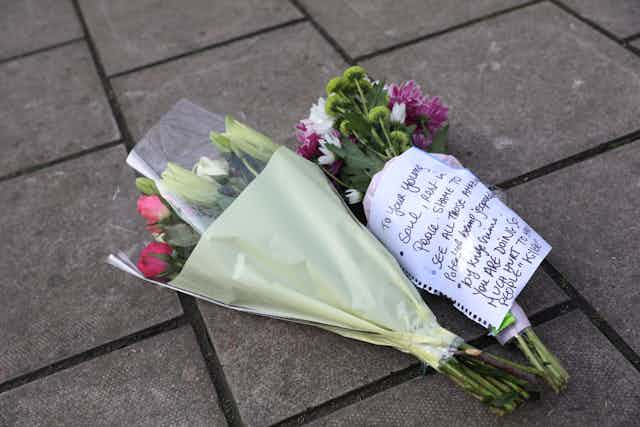When she was home secretary back in 2011, Theresa May committed £10m as part of a new policy aimed at ending gangs and youth violence. Today, following an eight-year “war on gangs”, the UK is once again in the midst of a national debate on youth violence amid reports that the country is facing a “national emergency” due to a “knife crime crisis” representing unprecedented levels of violence.
The almost incessant – and at times insensitive – analysis of the individual tragedies reveals a succession of harms endured by young people, and points to a complex picture that should act as a warning against knee-jerk explanations or responses. Yet those in power are likely to move quickly to define and construct the “problem”, swiftly followed by a series of policy “fixes”. They should instead be willing to learn from past mistakes, and really consider the evidence.
It seems strange to us that little mention has been made in the current youth violence debate about the obvious failure of the ending gangs and youth violence (EGYV) policy. A number of academics, including us, have questioned the validity of government-led responses to gun and knife violence, which over the last decade have focused on policing gangs.
One particular failure stemming from the EGYV policy is the ongoing conflation of gangs and youth violence. Analysis of gangs and youth violence in Manchester exposed the problematic disconnect at the heart of the policy – that youth violence is unrelated to gangs, in the way the police define them.
Data from the Metropolitan Police in London has also shown that a gang element was identified in only “a relatively small amount of serious youth violence”. Between 2011 and 2016, the figures were fairly consistent, with just under 5% of cases of youth violence identified as having a gang element.

Such findings, now substantiated in both Manchester and London, confirm the myths contained in a dominant narrative that links gangs and youth violence.
A war on gangs funded by the Home Office and led by the police was never going to address youth violence. Yet public transcripts of discussions at the Mayor of London’s office reveal that even when those overseeing policy know this, the strategy of police and their partners remains focused on “intelligent stop and search” within an “anti-gang strategy”.
A 2018 report by the Centre for Social Justice, a think-tank founded by the former Conservative Party leader Iain Duncan Smith, also claimed that gangs had a central role in knife crime. This is despite strong criticism of the statistical evidence for the basis of these claims.
Why young people carry knives
A number of other key research findings are also being conveniently misrepresented or ignored in the current debate about knife crime. For example, some politicians argue stop and search has a potential to reduce crime, but the College of Policing’s own analysis over a ten-year period in London demonstrates that there’s precious little evidence of a meaningful effect of this on reducing crime.
Also overlooked are the reasons why young people carry knives. A recent large-scale statistical analysis of weapon carrying by young people revealed a significant link between carrying a weapon and distrusting the police.
Such findings, coupled with those reflecting the experiences of socially marginalised young people and particularly, black and Asian youth who are over-policed and under-protected, suggest that a reintroduction of ineffective and discriminatory policing can lead to greater distrust. In turn, this could drive an increase in young people carrying weapons. Not only are the policing strategies being proposed right now likely to be ineffective, they will certainly increase the criminalisation of young people and potentially increase weapon carrying.
Read more: Knife crime: important new findings could help us understand why people carry weapons
Why then, when the evidence is there, are politicians doubling down on strategies that are failing? In a moment where a fresh and honest review of the situation is needed, there is a drive to rely on existing tropes and strategies.
Addressing wider injustices
It’s likely that the lion’s share of any new funding announced in the coming months will once again be led by the Home Office and centred on the police. Communities desperately in need of investment may be offered a role in this policy implementation, but we fear it will be with the same caveats as previous policies – such as identifying young people as “risky” or “at risk”, which can be damaging.
Those of us who research the criminalisation of young people and the policing and punishment of “gangs” are experiencing a strong and concerning sense of deja-vu. Our concerns are that rather than a careful and measured analysis, this moment will be used and abused for other agendas and the police investment will achieve nothing positive for young people experiencing harms in the long term.
The evidence exposes a harsh reality, that a reduction in crimes and harm experienced by young people will not be achieved through a criminal justice response, but by addressing injustice in wider sense. The police’s inability to generate trust and respond to crime effectively means they have the potential to further drive social injustices and violent crime.

